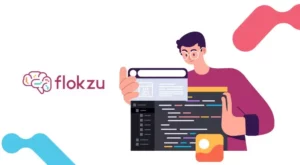In the previous chapter, Tommy and Clerius faced the intense pain of growing for the first time. In this opportunity, they have a new challenge, to manage the deliverable approval workflow in their consultancy firm. That is the flow that must follow each document that their organization produces, ensuring that its quality standards are met.
Chaos in the approval of deliverables
With more clients and more projects in each client, the number of deliverables that CleTo was generating, was impossible to handle by mail. They spent hours trying to find out which was the last version, the one that had to be approved, or the one that had been sent to the client.
There were deliverables that reached the client with grammatical errors, or directly without the review of a Manager. And many arrived late.
![Deliverable approval workflow. Tommy & Clerius [Chapter 2] 1 Chaos in the deliverable approval workflow. Flokzu BPM](https://www.flokzu.com/wp-content/uploads/2019/09/Flokzu_Tommy__Clerius_Emails-1024x576.png)
Clerius had a great relationship with his team, but he realized that he couldn’t continue to function on the basis of his intuition and perception. He needed a higher level of formalism.
The new workflow to approve deliverables.
Tommy, with its well-known analysis capacity, had identified the key elements they had to consider to improve their deliverables approval workflow:
- Distributed submit. Any team member could create a new deliverable, from anywhere, and submit it to the approval workflow.
- Management of versions. Keep the different versions together, and always be able to identify the last one.
- Deadline for each deliverable. Each deliverable must have deadline. It should trigger alerts before this due date.
- Supervision of tasks. Team leaders should be able to see which deliverables are about to fall behind, or overdue, as well as how many tasks in this situation each team member has.
- Knowledge management. Being able to quickly search for and find previous deliverables increases efficiency significantly, and reduces errors.
Process automation to the rescue.
Tommy and Clerius decided to implement their deliverable approval workflow in the cloud using Flokzu (also known as a BPM Suite).
Formalizing the document deliverable workflow was simple using standard BPMN notation. In less than two hours, they had the first version of their workflow, but it already allowed them to significantly increase their control and quality of deliverables:
![Deliverable approval workflow. Tommy & Clerius [Chapter 2] 2 workflow Document Approval 1](https://www.flokzu.com/wp-content/uploads/2016/01/workflow_Document_Approval-1.png)
They invited the other team members, who were immediately able to create new deliverables, from anywhere, and have them follow the defined flow. That’s how they met the first requirement of Tommy’s list.
Flokzu allowed them to attach the following versions of each file. Then, in the same process instance of the deliverable, they had all the files attached and all their versions. And dated, so determining which was the last one was trivial.
Not only that but in the process form, they defined a specific field to store the “Delivery Deadline”. This field functioned as a final date that everyone knew about it. And alerts were defined via mail, to be fired 3 days and 1 day before that expiration.
The real-time report allowed Tommy and Clerius to know at all times which deliverables were being worked on, which were late, and who was responsible for them. This allowed complying with due dates.
Deliverables were no longer in people’s mailboxes but centralized and indexed in Flokzu. The advanced search made it possible to quickly find relevant documents, speeding up the time it takes to create new documents and allowing to take advantage of the knowledge already available in CleTo.
In sum…
The deliverable approval workflow is a critical process in many organizations. Automating this process allows to manage deadlines, increase the quality of deliverables, manage pending tasks and their responsibilities.
In Flokzu we offer a free trial of our Premium service for 14 days. We also offer free advice to help you set up the first process and start automating your processes, without pain.
You can also schedule a work session here to model a real-life process in your organization together.




























